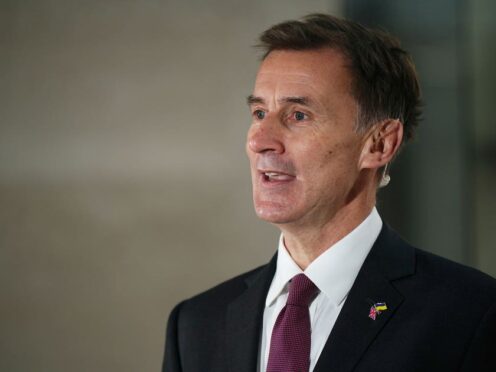
The Chancellor is facing growing calls to tackle British workers’ ill health in next month’s Budget after official figures showed those unable to work because of long-term sickness reached another record high.
The Office for National Statistics (ONS) revealed 9.3 million Britons were classed as economically inactive in the jobs market in the final quarter of last year, up 1.3% year-on-year.
This was pushed higher by another increase in those off work thanks to long-term sickness, to a record 2.8 million, up 8.4% year on year and 2.4% higher than the previous quarter.
It comes after recent revisions to data showed the picture is worse than first thought, with the inactivity rate jumping to 21.9% in the three months to November, from the 20.8% recorded previously.
The latest data showed the rate remained at 21.9% in the three months to December.
Sarah Coles, head of personal finance at Hargreaves Lansdown, warned that “with health services stretched so thin, and waiting lists so long, there’s a risk this figure continues to rise”.
Pressure is mounting on Chancellor Jeremy Hunt to address the issue of long-term sick, which experts said is compounding difficulties in labour supply and holding back the wider economy.
The Resolution Foundation said the “record number of people who are economically inactive due to ill health means that Britain remains the only G7 economy yet to return to pre-pandemic employment levels”.
Hannah Slaughter, senior economist at the think tank, said: “This is holding back the economy, putting pressure on the public finances and the NHS, and limiting opportunities for too many people.
“Reversing this trend will be a priority for the current and next government.”
Business leaders joined the call for action as they said firms continue to struggle to recruit workers.
The Institute of Directors (IoD) said record long-term sickness was a “particularly worrying sign of structural issues” in Britain’s jobs market.

Alexandra Hall-Chen, principal policy adviser for employment at the IoD, said: “Taken together with the government’s upcoming changes to legal migration rules, it is clear that urgent action is needed from government to increase domestic labour supply at the upcoming spring Budget.
“Such measures should include delivering on the promised expansion to childcare provision and implementing measures to widen access to occupational health services.”
The Chartered Institute of Personnel and Development (CIPD) insisted that “addressing the UK’s ill health must be a key priority for the Government”.
Jon Boys at the CIPD said: “Breaking down barriers to working for people with health conditions must be a priority for policymakers and employers.
“It’s imperative to prioritise occupational health services, to prevent individuals from exiting the workforce prematurely.”
Minister for employment Jo Churchill said: “Our pioneering welfare reforms are going further, helping reduce the number of people who would otherwise be on the highest tier of incapacity benefits by 370,000 and tearing down barriers to work for millions of disabled people through our Chance to Work Guarantee.
“Meanwhile, our £2.5 billion Back to Work Plan will drive down inactivity, grow the economy and change lives.”
But new measures could also see benefits withdrawn from those with long-term health conditions and disabilities if they are unable to find a job within 18 months.

Enjoy the convenience of having The Sunday Post delivered as a digital ePaper straight to your smartphone, tablet or computer.
Subscribe for only £5.49 a month and enjoy all the benefits of the printed paper as a digital replica.
Subscribe